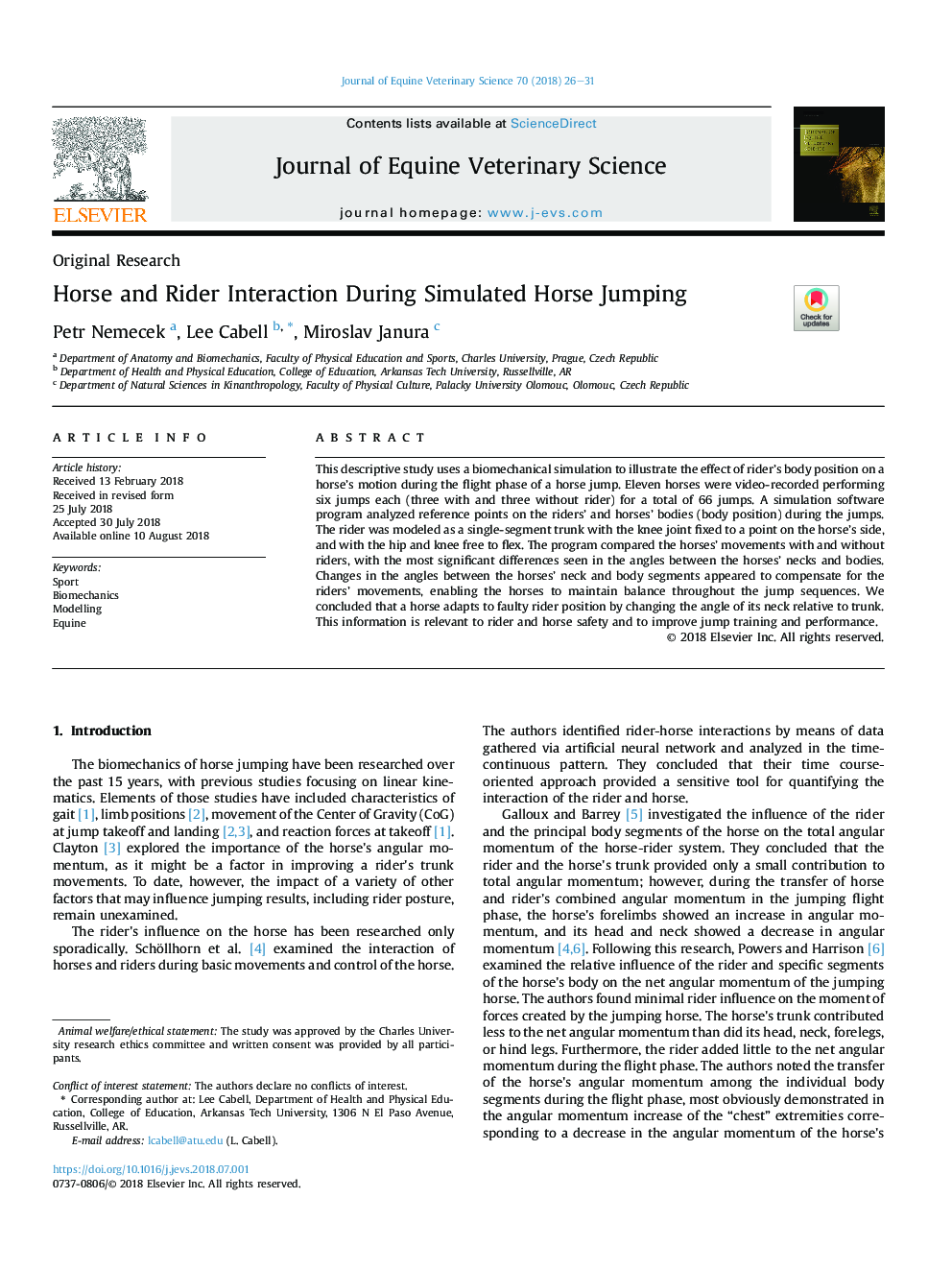| Article ID | Journal | Published Year | Pages | File Type |
|---|---|---|---|---|
| 10137233 | Journal of Equine Veterinary Science | 2018 | 6 Pages |
Abstract
This descriptive study uses a biomechanical simulation to illustrate the effect of rider's body position on a horse's motion during the flight phase of a horse jump. Eleven horses were video-recorded performing six jumps each (three with and three without rider) for a total of 66 jumps. A simulation software program analyzed reference points on the riders' and horses' bodies (body position) during the jumps. The rider was modeled as a single-segment trunk with the knee joint fixed to a point on the horse's side, and with the hip and knee free to flex. The program compared the horses' movements with and without riders, with the most significant differences seen in the angles between the horses' necks and bodies. Changes in the angles between the horses' neck and body segments appeared to compensate for the riders' movements, enabling the horses to maintain balance throughout the jump sequences. We concluded that a horse adapts to faulty rider position by changing the angle of its neck relative to trunk. This information is relevant to rider and horse safety and to improve jump training and performance.
Keywords
Related Topics
Life Sciences
Agricultural and Biological Sciences
Animal Science and Zoology
Authors
Petr Nemecek, Lee Cabell, Miroslav Janura,
